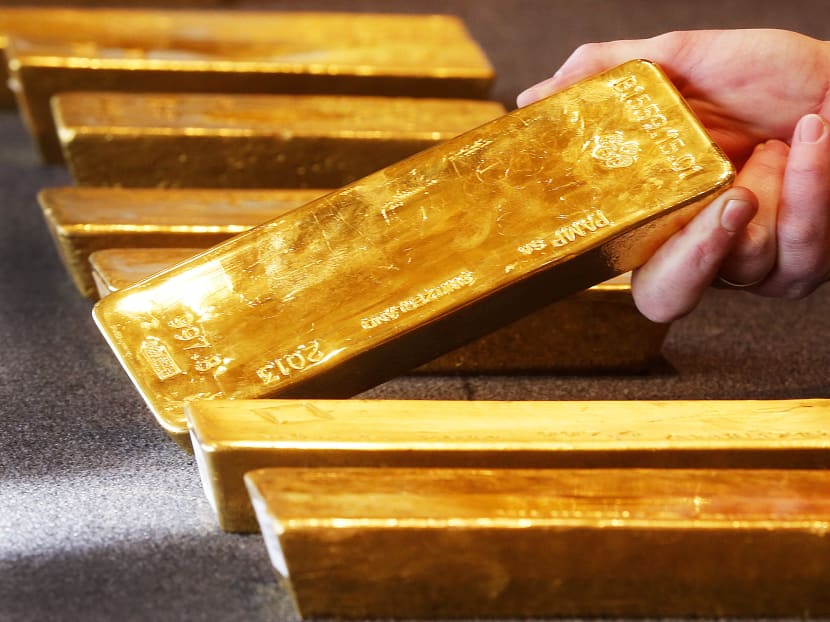This country wants everyone to have 100g of gold
KAZAKHSTAN — A landlocked nation perched between China and Kazakhstan is embarking on an experiment with little parallel worldwide: Shifting savings from cattle to gold.
KAZAKHSTAN — A landlocked nation perched between China and Kazakhstan is embarking on an experiment with little parallel worldwide: Shifting savings from cattle to gold.
One of the first post-Soviet republics to adopt a new currency and let it trade freely, Kyrgyzstan’s central bank wants every citizen to diversify into gold. Governor Tolkunbek Abdygulov says his “dream” is for every one of the 6 million citizens to own at least 100g of the precious metal, the Central Asian country’s biggest export.
“Gold can be stored for a long time and, despite the price fluctuations on international markets, it doesn’t lose its value for the population as a means of savings,” he said in an interview. “I’ll try to turn the dream into reality faster.”
In the two years that the central bank has offered bars directly to the population, about 140kg of bullion have been sold, Mr Abdygulov, 40, said by phone from the capital, Bishkek.
“We are hopeful that our country’s population will learn to diversify its savings into assets that are more liquid and — more importantly — capable of retaining their value,” he said. In rural areas, cattle is still the asset of choice for investors and savers, according to Mr Abdygulov.
Kyrgyzstan has bucked a trend among central banks, the biggest owners of bullion, by stepping up buying even as its counterparts cut purchases in 2016 to a six-year low. Global combined bar and coin demand fell, according to the World Gold Council.
Across the emerging world, gold — often seen as the ultimate haven at times of upheaval — hardly needs any extra promotion. India, the world’s largest consumer after China, is in fact taking steps to curb imports of the precious metal by encouraging its citizens to deposit private gold holdings in banks.
In Turkey, where banks can use bullion as part of their reserve assets, President Recep Tayyip Erdogan last year called on people to convert their foreign-currency savings into liras and gold.
What makes Kyrgyzstan unique is the central bank’s effort to win converts by providing infrastructure for safe-keeping and investment. The central bank produces bars of different sizes, varying in weight from 1g to 100g.
The central bank governor believes his plan is realistic, even though it means the population would own about 600 tons of gold, equivalent to 30 times the nation’s current annual output. Mr Abdygulov declined to specify the timeframe for when his goal of 100g per person can be met.
The options available for storage include safe deposit boxes at commercial lenders or with the central bank, he said. Some people opt to keep gold at home or possibly even bury it in the ground, according to Mr Abdygulov.
With Kyrgyzstan enduring upheaval from economic crises in the early 1990s to bank failures during the last decade, gold is seen as a far safer bet than securities, he said.
“For Kyrgyzstan, gold is an alternative instrument of investment,” Mr Abdygulov said. “The National Bank has ensured liquidity for gold — we aren’t only selling, but also buying back gold bars that we produced and sold.”
As Mr Abdygulov took the reins of the central bank in 2014, Kyrgyz policy makers decided to raise gold’s share in its own reserves, now keeping about 10 per cent of its US$2 billion holdings in bullion. After years of capping the amount at 2.6 tons, the stockpile surged by more than 70 per cent since 2012 to 4.5 tons at the end of the third quarter in 2016, according to the latest data compiled by the London-based World Gold Council.
With Kyrgyzstan’s output at about 20 tons a year, the central bank uses the national currency, the som, to buy gold mined locally, which can then be sold abroad if needed, according to Mr Abdygulov. The governor said he’s counting on higher output in the future.
Mr Abdygulov, who has masters degrees from Nagoya University in Japan and the University of North Texas, may be a gold enthusiast, but he’s no advocate for dislodging the dollar completely. His advice is based on the “rule of three” — splitting up savings between the som, foreign currency and gold.
As for the metal’s prospects, he’s upbeat, even after it surged the most in five years in 2016 and continued to post gains in 2017. Bullion has rallied more than 7 per cent this year as concerns that Mr Donald Trump’s policies on trade and immigration could derail US growth boosted speculation that the Federal Reserve would be slow to raise borrowing costs.
“The price of gold in the medium term will remain in the current range,” Mr Abdygulov said. “Insignificant deviations are possible, but nothing major.” BLOOMBERG







